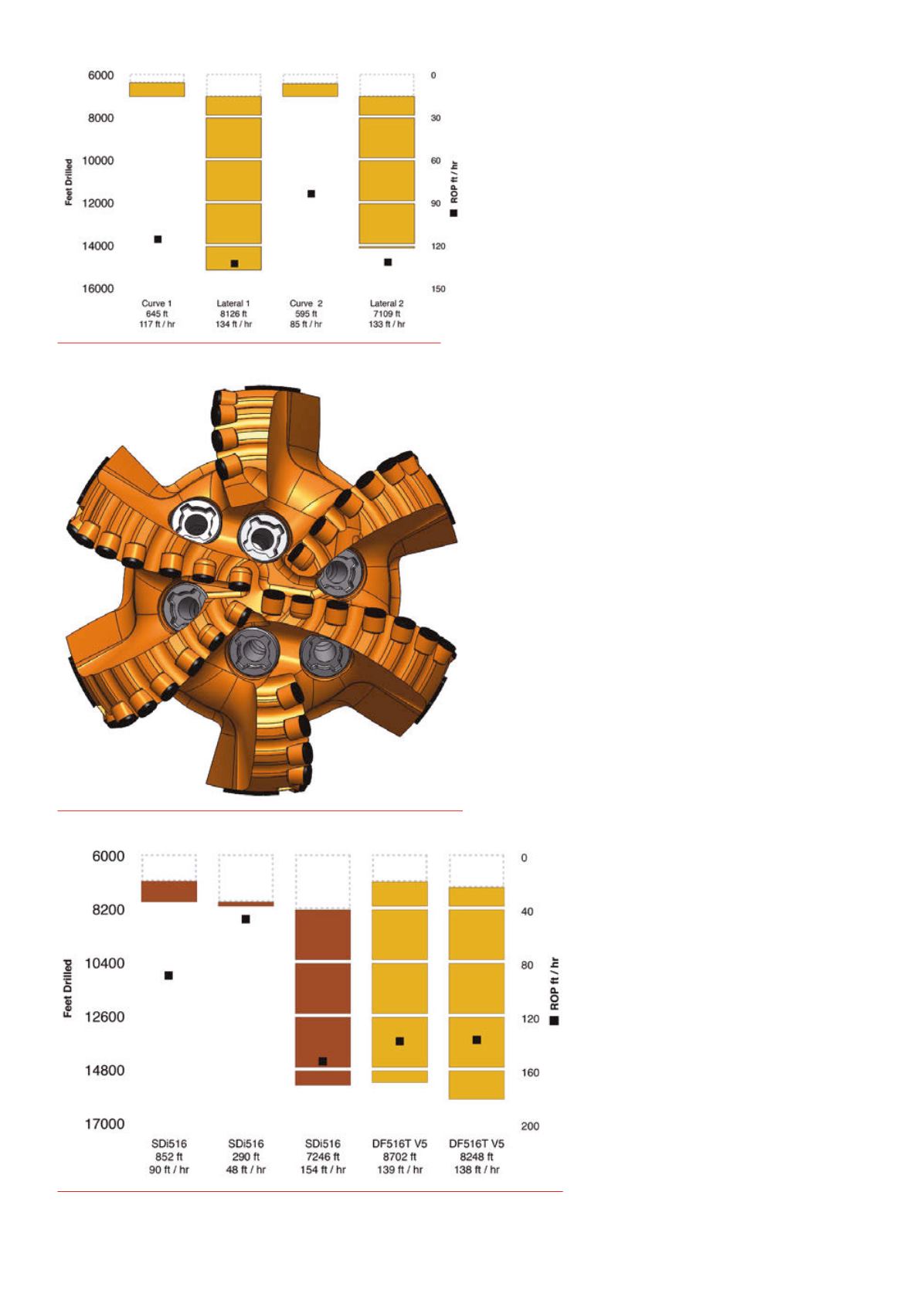
48 |
Oilfield Technology
June
2015
Drilformance recognises that now more than ever,
operators need real solutions that lower their AFEs. The
company began its latest round of product innovation with
the goal of updating, improving, and fine‑tuning its catalogue
of high‑performance PDC bits. Undaunted by plummeting rig
counts due to historically low oil prices, it remains committed
to executing that strategy. The company views the recent
industry downturn as a pivotal opportunity for growth. In
the curve and lateral intervals across North America and the
Middle East, this strategy is paying dividends for operators who
value the impact an application specialised PDC bit can have on
their cost per foot.
Operating intheEagleFord
South Texas is an area where Drilformance has operated for
years. Operators there make use of different techniques to drill
their best wells.
In order to maximise vertical section, or pay zone exposure,
an operator in Webb County TX, plans their curves with 15˚
per 100 ft drilled build rates. Those kinds of build rates equate
to zero tolerance for bits that fail to build and hold tool‑face.
In addition to the demanding curve requirements, the ideal
bit would trip out without any damage and be made up to the
lower bend angle lateral motor and proceed back downhole to
drill the 7000 ft or longer laterals efficiently, minimising slide
time and maximising rotating ROP. The three main objectives of
the DF611 were to hold tool-face and yield the required dog leg
severity (DLS) in the curve, grade a 0‑0 after drilling the curve to
allow re‑running into the lateral, and drill the lateral at a high
ROP while minimising walk. The DF611 has been delivering on
all three counts, having completed more than 30 successful
runs without being pulled for build rates, and routinely drilling
laterals while averaging over 130 ft/hr, including one 3000 ft
sprint at over 200 ft/hr that was cut short by a motor failure.
The versatility of this series of bits stems from an
operator‑centric approach to design. The bits are engineered with
the goal of offering operators highly optimised, fit‑for‑purpose
technology, which is made possible by the unique reliance of both
parties on leading edge performance. Because operators seek
the maximum utility from the dollars they spend, an application
specific PDC needs to take advantage of the high
spec pumps, high differential pressure capable
motors, and aggressive directional drillers. Too
often, bit companies rely heavily on artificial
depth of cut management. While TCI (tungsten
carbide inserts) or DEI (diamond enhanced
inserts) style inserts can be helpful in mitigating
erratic reactive torque, there are times when
they can hinder top‑end performance. Tool face
control was of the utmost concern with the DF611,
and while some bits rely on TCIs for depth of cut
management, the DF611 was designed to hold
tool face as well or better without the addition
of instantaneous ROP limiting TCIs. Thus, when
weight is added and differential pressure climbs,
instead of bleeding energy by having to push
the TCIs further into formation above a certain
ROP, the DF611 offers more efficient translation
of differential pressure into ROP by increasing
the depth of cut of cutters only. This approach
has yielded instantaneous ROPs while rotating of
greater than 400 ft/hr in some instances.
Figure 1.
DF611 curve/lateral performance. WebbCounty, Texas.
Figure 2.
TheDF611 requires no artificial depth of cutmanagement.
Figure 3.
TheDF516T savedaUtica Shale operator two trips.


